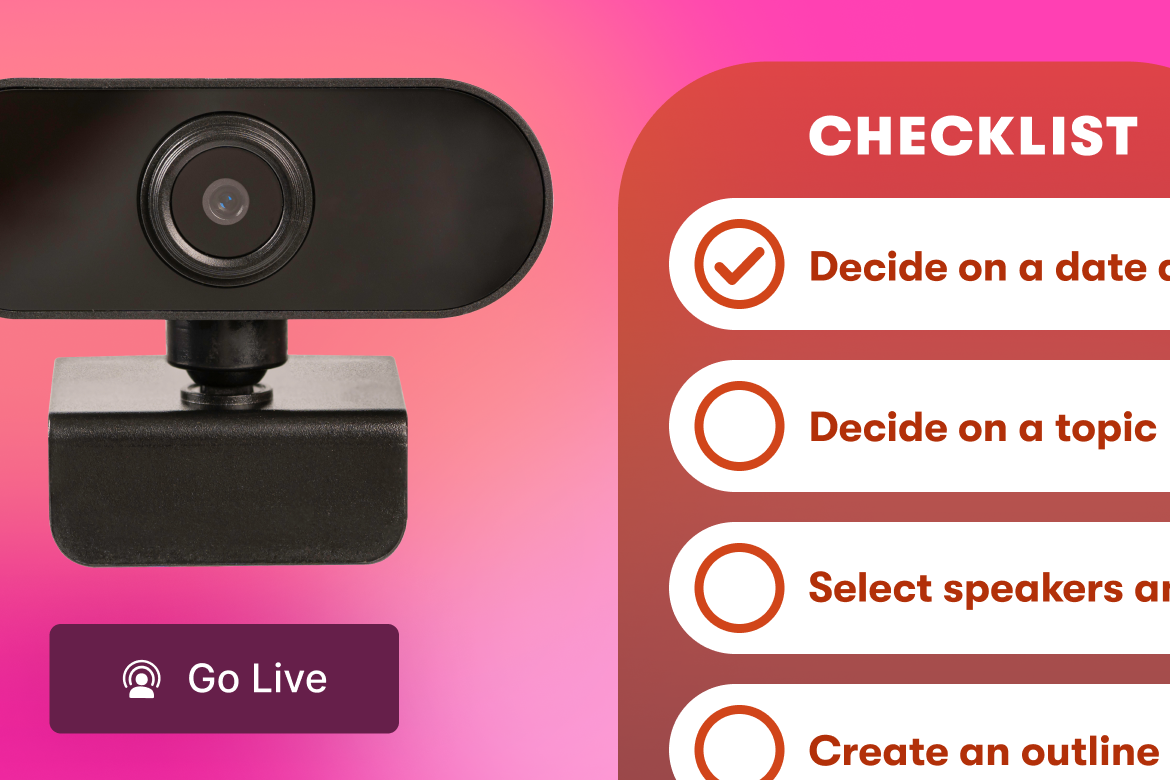Behind the Curtain with Wistia Studios: Pre-Production for Show Business
May 10, 2021
Topic tags
In Wistia Studios’ latest series, Show Business, experts in production, media, and marketing show you how you can start creating binge-worthy content that helps support your brand.
Lead Producer Adam Day and Development Producer Sydney Rutman helped bring the series to life, especially during pre-production. Along the way, they documented every move they made, which helped inform the Show Business episode all about pre-production, too!
We’ve said it before, and we’ll say it again, pre-production is essential for setting you and your team up for success when it comes to creating video or audio content.
“Pre-production is essential for setting you and your team up for success when it comes to creating video or audio content.”
To show you how pre-production for Show Business unfolded, here’s a peek into our team’s entire timeline, beginning with early conversations about the show’s concept all the way through the final script preparation right before production began — dig in to see how we brought Show Business to life!
Early conversations and concepting
In 2018, Wistia Studios launched Brandwagon, an interview-style talk show where Wistia CEO, Chris Savage, chatted with the brains behind successful brands. The show was a huge hit with our audience, and we knew we were on to something. It even inspired us to launch the Brand Affinity Marketing Playbook, which explained why brands should invest in creating binge-worthy content to build an audience.
The Playbook was a great first step, but as we developed and launched more shows, we knew we had an opportunity to really pull back the curtains and teach brands how they can launch shows of their own. The Studios team started discussing a cornerstone piece of content that would help businesses feel confident about doing their own Brand Affinity Marketing. An initial placeholder title for this piece of content was The Show Show.
The team began by conducting interviews with marketing and sales stakeholders to understand better what information would have the highest impact on their teams. Then, they created a treatment for Show Business. A treatment is a one-pager or short document that describes what a piece of content will look and feel like for a reader to get a sense of the end result. It includes a show description, outline/format of an episode, inspiration points, mood boards, and some existing content examples.
“A treatment should be a guide or summary of your show.”Sydney Rutman
Development Producer
Greenlight and project kickoff
The next stage in creating Show Business was setting up a greenlight meeting to approve the project. Sydney sent an email to Wistia’s senior team to set expectations and get them excited for the formal pitch. She included the treatment to review in advance and went into greater detail on the show’s full vision during the pitch.
After the executive team gave the official thumbs-up, it was time to start planning for production. The Studios team started creating episode outlines for the entire series. The first iteration had 22 individual episodes. Different stakeholders weighed in on the best way to tell the story, and the team ended up with a 20-episode framework. Here’s what an episode outline from the final concept looked like:
E02. Finding Your Niche Before you decide to make a show, it’s important to know who you’re making it for! Finding Your Niche will help marketers understand that Brand Affinity Marketing content is most effective when created with a specific audience in mind.
Scripting, booking guests, and coordinating production
The next step in the process was to start writing scripts. To give the project visibility across our team, we created a script and guest tracker. Each script underwent as few as two and as many as 10–12 rounds of revisions within our creative and marketing teams to make sure the tone and information were exactly what we wanted to communicate. This process continued even as we entered production. Scripting happened concurrently with guest pre-interviews, which helped drive the direction for some of the scripts.
We knew we wanted a blend of scripted information — so we could tell our audience exactly what we wanted them to know — and candid takes from our guests. To give a sense of what we hoped an episode could be, we wrote scripted lines as placeholders for those “hot takes,” which helped guide us in pre-production for our guest interviews. With those placeholder sentiments, we knew what sort of comment we hoped to get from our guest around a particular topic.
First draft scripts also included visual inspiration to give a sense of what we could show on screen to support where the script was headed visually. This informed pre-production meetings where we planned our shots as well.
Our team also started making a wish list of talent we would love to get as guests for Show Business. We started reaching out, booking guests, and doing some early production coordination, which consisted of asking folks things like:
- When are you available from January to March?
- Where in the country is most convenient for you to film? Our shooting locations are Boston, LA, and NYC.
We started booking guests and created a talent map to track who was booked and what topics we hoped they could speak to. We reached out to our team’s network and to several of our customers, generally via phone call first or email requesting a phone call.
During this time, we also started scouting locations for our shoots. We set our limitations first, which helped guide our decisions around the sets we chose. Because we wanted to conduct a lot of interviews and we had a compressed production schedule, we looked for sets that could accommodate two shoots in one day to minimize travel time. We looked for locations that could meet our style guide for the show, which were artificial sets with a lot of symmetry and straight lines. We wanted spots that already had furniture and a clean design so we could save money and time. We used a mix of Google Docs and Sheets, Quip, and Slack to communicate, organize, and track progress.
We looked close to home, like our local favorite bubble tea spot in Cambridge, or our guests’ spaces, like the Drift office for CEO David Cancel, and used Peerspace as well. It was also important for us to stake out all of the places we wanted to eat near our sets because this isn’t something you want to waste time figuring out on the day of your shoot.
“Peerspace was amazing. It’s great for scouting, organizing, and paying for locations. It’s like Airbnb for shoots. Definitely make sure to read reviews because when it comes to acoustics, you really need to make sure that you’ll get good sound.”Sydney Rutman
Development Producer
Guest pre-interviews, shot planning, and show branding
As we booked guests, we conducted pre-interviews with each participant. We sent them the list of Show Business episodes beforehand to see which topics they felt particularly passionate about. During our 30-minute pre-interview call, we briefly touched on each topic and took notes. We used those notes to revise and work additional sentiments into the draft scripts.
When we went through each script, we brainstormed what our B-roll and found footage should look like. We also identified which areas of the script would require an animated sequence. We started working with an animator to get the look and feel for the motion graphics and land on a general direction for the aesthetic.
Additionally, we previsualized our interview shots and lighting setup, and even some of our sets, making sure each location had a couple of different shot options just in case.
As the interviews were coming together, the design team was hard at work developing the visual language of the show. From the initial treatment to the early mood boards, designs at each stage received a thumbs up and/or feedback from the team and moved to the next stage.
Final script prep and production
The last steps we took during pre-production were preparing custom scripts for each guest that included the sentiments we hoped to capture from them as well as prompts to help guide the interview. We prioritized which sentiments were essential for the show, and which were nice to have but not necessary. Then, we sent out call sheets to our guests to help them arrive prepared for their respective shoots.
Here’s an example of our call sheet:
Don’t underestimate the importance of pre-production
There you have it — our entire pre-production timeline for Show Business! From early conversations about concepting to final script preparations, every step in the planning process helped make the series a success. We hope you can take some of our pre-production processes and put them into practice when you go out and create video and audio content for your brand!






